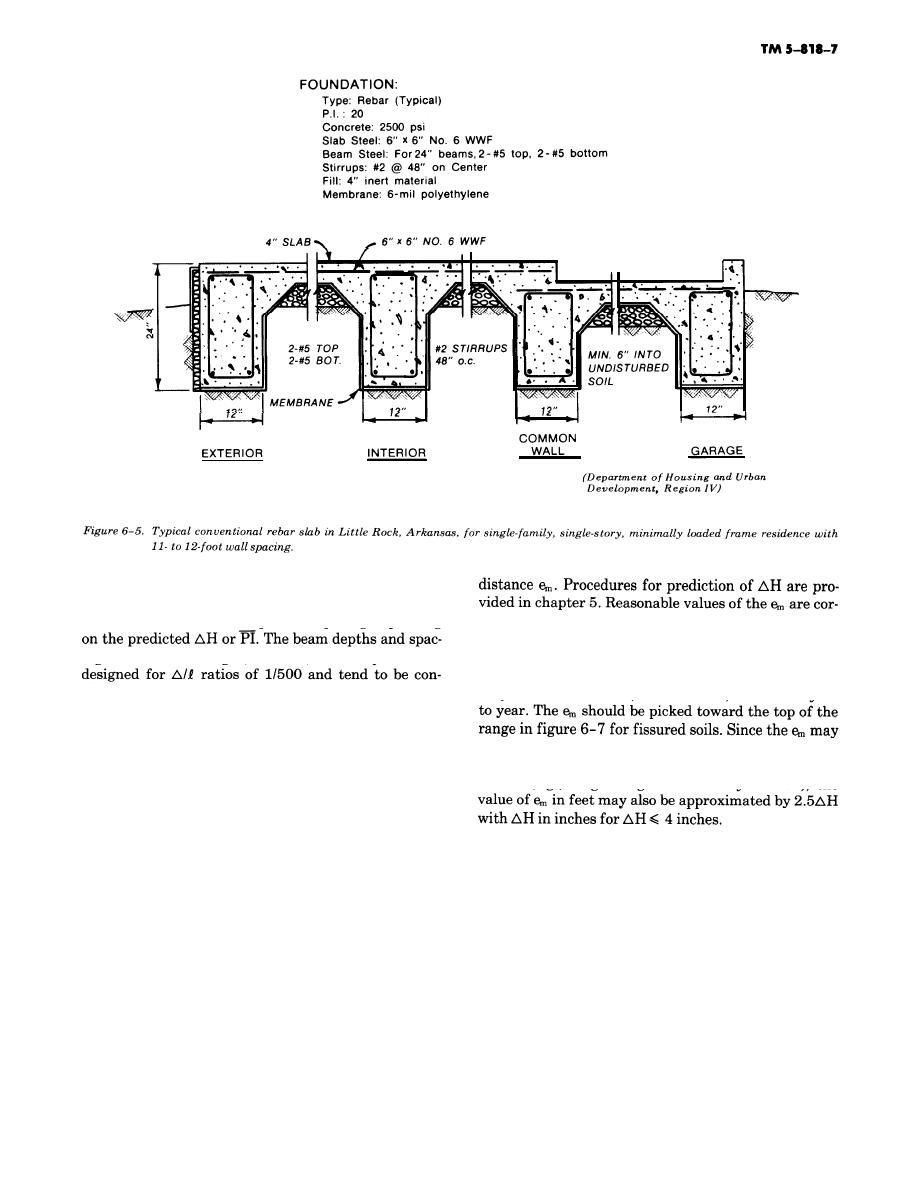
(b) Preliminary design, The three designs for re-
inforced and stiffened thin mats presented in table
related with the Thornthwaite Moisture Index (TMI) in
6-1 differ in the beam depth and spacing depending
figure 6-7. The TMI, a climate related parameter
roughly estimated from figure 6-8, represents the
ings for each of the light, medium, and heavy slabs are
overall availability of water in the soil. The TMI can
vary 10 to 20 or more (dimensionless) units from year
servative in view of still undetermined fully acceptable
design criteria and relatively high repair cost of rein-
forced and stiffened slabs. Stirrups may be added, par-
exceed the range given in figure 6-7, depending on the
ticularly in the perimeter beams, to account for con-
activity of the soil or extreme changes in climatic con-
centrated and exterior wall loads.
ditions (e.g., long droughts and heavy rainfall), the
(2) Post-tensioned. Figure 6-6 illustrates an ex-
ample of a posttensioned slab. Properly designed and
constructed posttensioned mats are more resistant to
fracture than an equivalent section of a conventional
(b) The loading distribution depends on the
architectural arrangement of the building and often
rebar slab and use less steel. However, post-tensioned
cannot be significantly altered. Perimeter and concen-
slabs should still be designed with adequate stiffening
beams to resist flexure or distortion from differential
trated loads should be supported directly on the stiff-
heave of the foundation soil, Experienced personnel
ening beams.
are necessary to properly implement the posttension-
(c) The length and width of the slab are usually
ing.
fixed by the functional requirement. Beam spacing de-
(3) Assumptions of design parameters. Design
pends on the slab geometry and varies between 10 and
20 feet. The depth of stiffening beams is controlled by
parameters include effects of climate, center and edge
modes of differential swelling, perimeter and uniform
the moment and shear capacity. The beam depth is ad-
I
loads, and structural dimensions.
justed as needed to remain within the allowable limits.
The width of the stiffening beam is usually controlled
(a) The effects of climate and differential swell-
--
by the excavation equipment and soil bearing capacity.
ing are accounted for by predictions of the maximum
(4) Structural design procedure, The design proce-
differential heave AH and the maximum edge lift-off
6-7


 Previous Page
Previous Page
